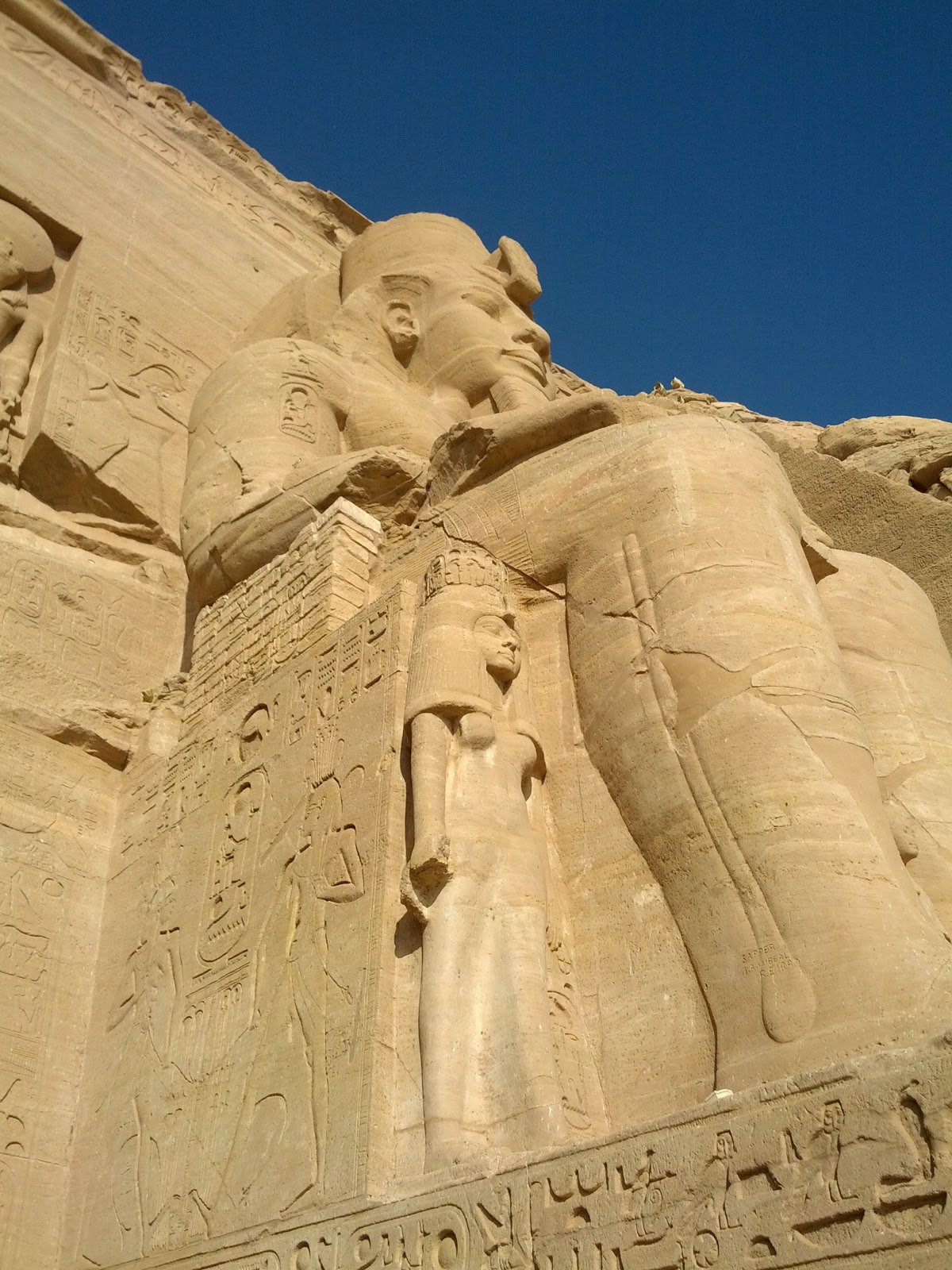Our last night on the ship was short lived as we checked out at 3am and was picked up by our tour company in order to join a motorcade of other tourists headed for Abu Simbel. In the dark, we waited among a long caravan of buses, vans, and cars until some official looking men signaled for us to go. For the next three hours, our driver patiently drove through the unchanging desert while T and I dozed off in the back seat. Periodically I would awake and look outside through bleary eyes only to find the landscape as somber and indiscernible as the last time I awoke (above). At times I wondered if we were getting anywhere at all.
With the morning sun shining brilliantly in yet another cloudless sky, we did eventually arrive at the temples of Abu Simbel. Carved out of a mountain on the western bank of the Nile, both temples overlook a clear view of Lake Nasser. However, we quickly learned that this was not the original location of the temples. Like Philae Temple, the temples of Abu Simbel also had to be moved to a higher location on the mountain in order to escape the rising waters caused by the High Dam.
.
The larger of the two temples is the Great Temple of Ramses II, named after the pharaoh who had it built. While it is dedicated to the gods of Ra-Horakhty, Amun, and Ptah, the pharaoh clearly did not shy away from taking every opportunity to celebrate himself as well. The entrance to the temple is guarded by four colossal statues of Ramses II, each in seated position and looking across the waters of Lake Nasser... that is, except for one whose upper body collapsed in antiquity. The pieces can still be found piled at its feet.
Sadly, we were not permitted to take any cameras into the temple. This was particularly unfortunate as I found the reliefs in the Great Hypostyle Hall to be among the most interesting and well preserved that we had see thus far. Not surprisingly, most of them featured Ramses II demonstrating his military might in the famous Battle of Kadesh.
Neighboring the Great Temple of Ramses II, was the smaller Temple of Hathor, which we were told Ramses II had built for his favorite wife, Nefertari (above). Aligning the entrance wall are six standing figures, four of which are Ramses II with the remaining two of Nefertari wearng the costume of Hathor, goddess of joy, love, and motherhood. Again we were not permitted to take in any cameras which again was particularly unfortunate as this temple included many beautifully painted reliefs of Nefertari.
It was still mid-morning when we joined the motorcade back towards Aswan. And just as we had come, we traversed 3 hours through the desert until our driver dropped us off at the Movenpick Hotel in Aswan (above). As the hotel was located on Elephantine Island, we had to take a ferry (provided by the hotel) across the water. Starving from our morning excursion, we quickly checked in and savored a meal at the hotel restaurant. We then spent a few hours relaxing in our room which we found to be spacious and clean but not without some quirky decor.
Later in the afternoon, we ventured out and took a felucca to the neighboring, Kitchener's Island in order to explore the Aswan Botanical Gardens. Minus a handful of souvenir vendors, we found the gardens to be peaceful and mostly deserted. A latticework of airy pathways took us under the dreamy shade of exotic trees and along the picturesque shoreline (above). As our felucca charged by the hour, we hurried back to the dock to meet our boat. Under the dying sunlight we returned to the hotel where we ended the day with room service and a movie.













0 comments:
Post a Comment